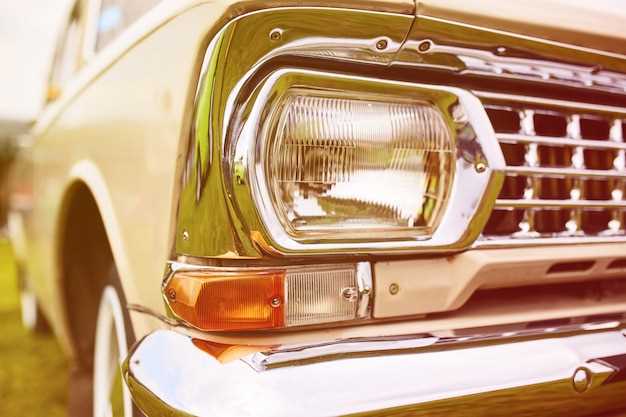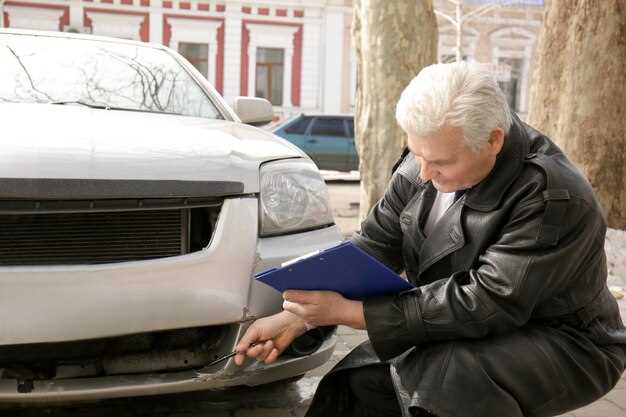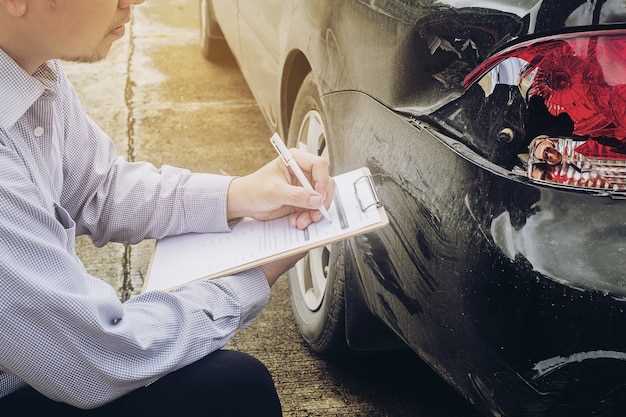
When it comes to classic cars, the beauty often lies in their intricate details and timeless design. However, even the most meticulously maintained vehicles can suffer damage in an accident. An effective assessment of the vehicle’s condition is paramount to ensuring its restoration and preservation for years to come.
After an accident, the first step involves a thorough inspection to identify any visible signs of damage. This includes evaluating the body, frame, and essential components that contribute to the car’s performance and safety. Understanding the extent of damage not only aids in determining repair costs but also helps in assessing the feasibility of restoring the classic car to its former glory.
In this guide, we will delve into the key aspects of inspecting classic cars post-accident, emphasizing how to conduct a comprehensive evaluation. By following our outlined steps, you can make informed decisions about repairs and maintain the integrity of your treasured vehicle.
Evaluating Structural Integrity of Classic Cars Post-Collision
Assessing the structural integrity of classic cars after a collision is crucial for ensuring safety and longevity. Post-collision inspections should begin with a comprehensive visual examination of the vehicle’s frame and body panels. Look for signs of deformation, cracks, or misalignment that may indicate underlying damage.
One of the primary concerns is the chassis, as it provides essential support to the vehicle. Check each section for any bends or breaks that could compromise performance. If the frame is bent, it may need realignment or replacement, which can be costly depending on the car’s rarity and value.
Next, inspect welds and joints for signs of stress or failure. In many classic cars, welds are a critical component of structural integrity, and any deterioration can lead to further damage. If any welds appear rusty or weak, they may require professional attention.
Additionally, examine suspension components, which play a vital role in handling and stability. Assess for any abnormalities, wear, or breakage that could have resulted from the impact. Replacing damaged suspension parts is essential for restoring the vehicle’s original performance.
Don’t overlook the possibility of hidden damage to the unibody or frame. Performing a thorough assessment may involve using specialized tools, such as frame machines that can detect misalignments. Options like computer-aided inspection can also pinpoint structural weaknesses that are not visible to the naked eye.
Finally, consulting with professionals who specialize in classic car repairs is highly recommended. Their expertise can help accurately assess damage and provide guidance on the necessary repairs to restore both safety and value to your classic vehicle.
Assessing Mechanical Damage in Classic Vehicles After an Accident

Assessing mechanical damage in classic vehicles following an accident is a crucial step in the restoration process. This assessment involves thorough inspection of key components that may have been affected during the collision. The first area to focus on is the engine, as any impact can result in misalignment or internal damage. Look for signs of oil leaks, abnormal noises, and changes in engine performance which may indicate underlying issues.
Next, evaluate the transmission system. Check for irregularities in shifting, unusual grinding noises, and fluid leaks, as these may signal damage that requires immediate attention. It is vital to inspect the driveshaft and axles as well; bending or cracking can lead to further complications if not addressed.
The suspension system should not be overlooked. Inspect the shock absorbers, springs, and control arms for any signs of cracks or bends. A compromised suspension can affect handling and safety, making this assessment a priority. Moreover, examine the brakes to ensure they respond effectively. Look for any damage to brake lines, calipers, and pads which can be critical for safe driving.
Lastly, assess the steering system, including the steering rack and tie rods. Ensure there are no distortions or play in the components as this can drastically alter vehicle control. A detailed and comprehensive assessment of these mechanical elements is essential to determine the extent of damage and the necessary repairs required to restore the classic vehicle to its former glory.
Documenting and Reporting Damage for Insurance Claims on Classic Cars

After a post-collision event involving a classic car, the process of documenting and reporting damage is crucial for a successful insurance claim. Start by conducting a thorough examination of the vehicle, taking note of both visible and hidden damage. Use a notepad or a digital device to record specific details such as the location of dents, scratches, and any structural issues.
Photographs play a vital role in the documentation process. Capture clear images of all affected areas, ensuring that both close-up and wide-angle shots are included. This visual evidence will support your claim and provide a comprehensive view of the damage incurred. Additionally, document any special features or customizations that may be relevant for valuation purposes.
Once you have gathered all necessary documentation, contact your insurance company to report the incident. Be prepared to provide them with detailed information regarding the accident, including the date, time, and circumstances surrounding the collision. Share the photographic evidence and notes you have compiled, as this will facilitate the assessment process.
It is also advisable to seek estimates from qualified mechanics or restoration specialists familiar with classic cars. These estimates will help support your claim by providing a professional evaluation of the repair costs needed to restore the vehicle to its pre-collision condition. Ensure that all estimates include detailed descriptions of the required repairs, along with parts and labor costs.
In summary, thorough documentation and prompt reporting are essential steps in the claims process for classic car owners. By being meticulous in capturing the damage and providing comprehensive information to your insurance company, you increase the likelihood of a favorable outcome in your claim.




